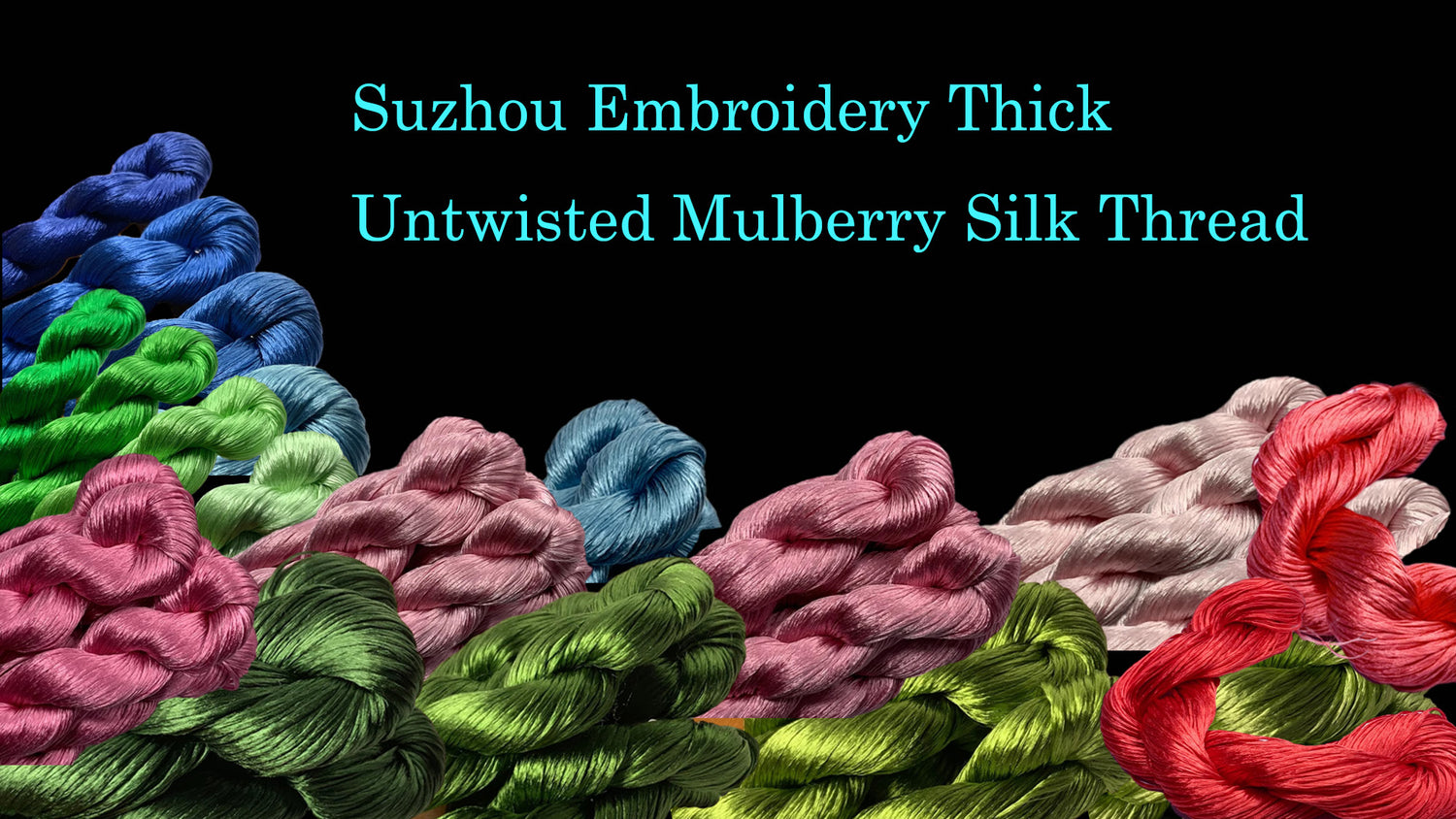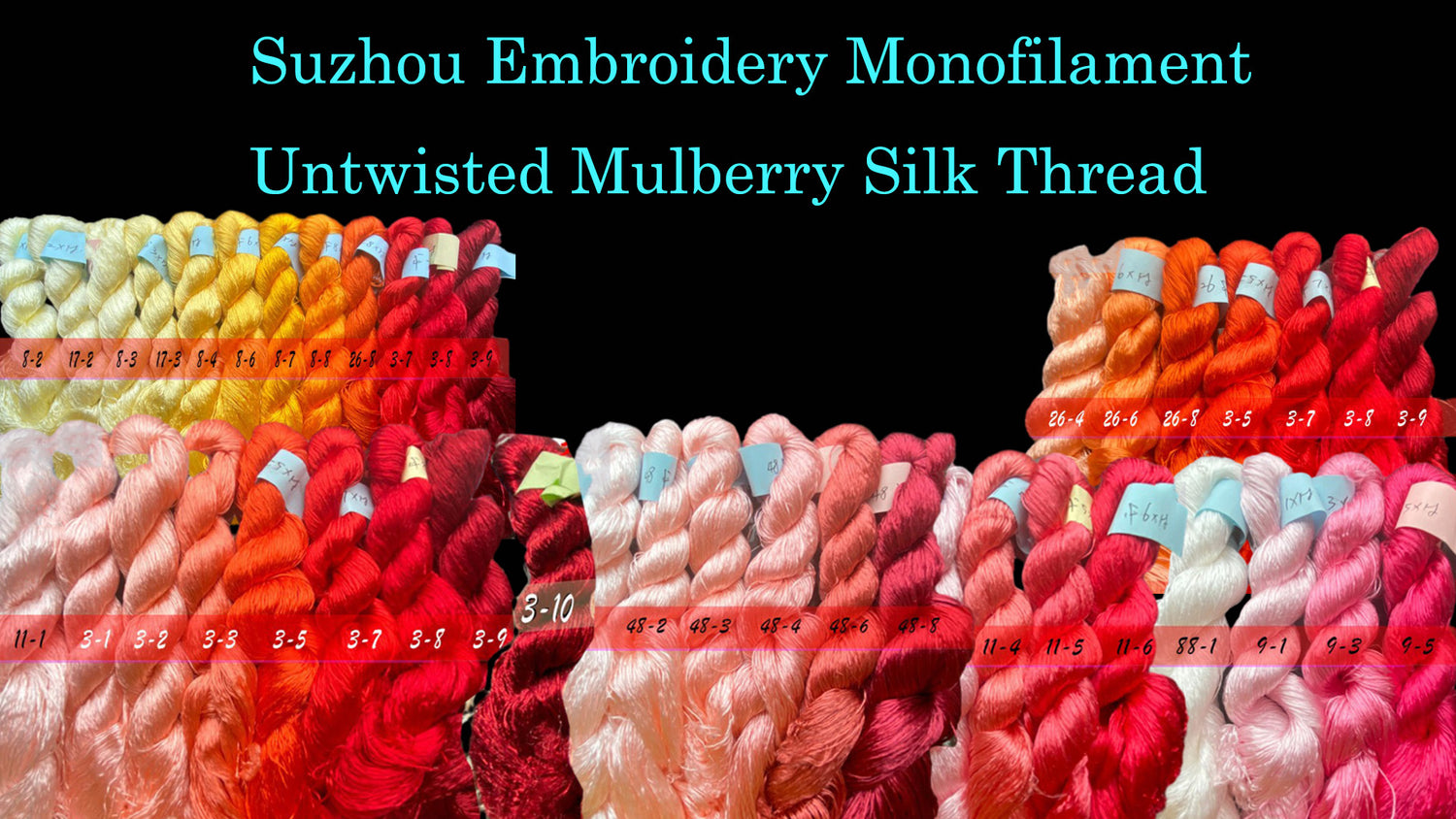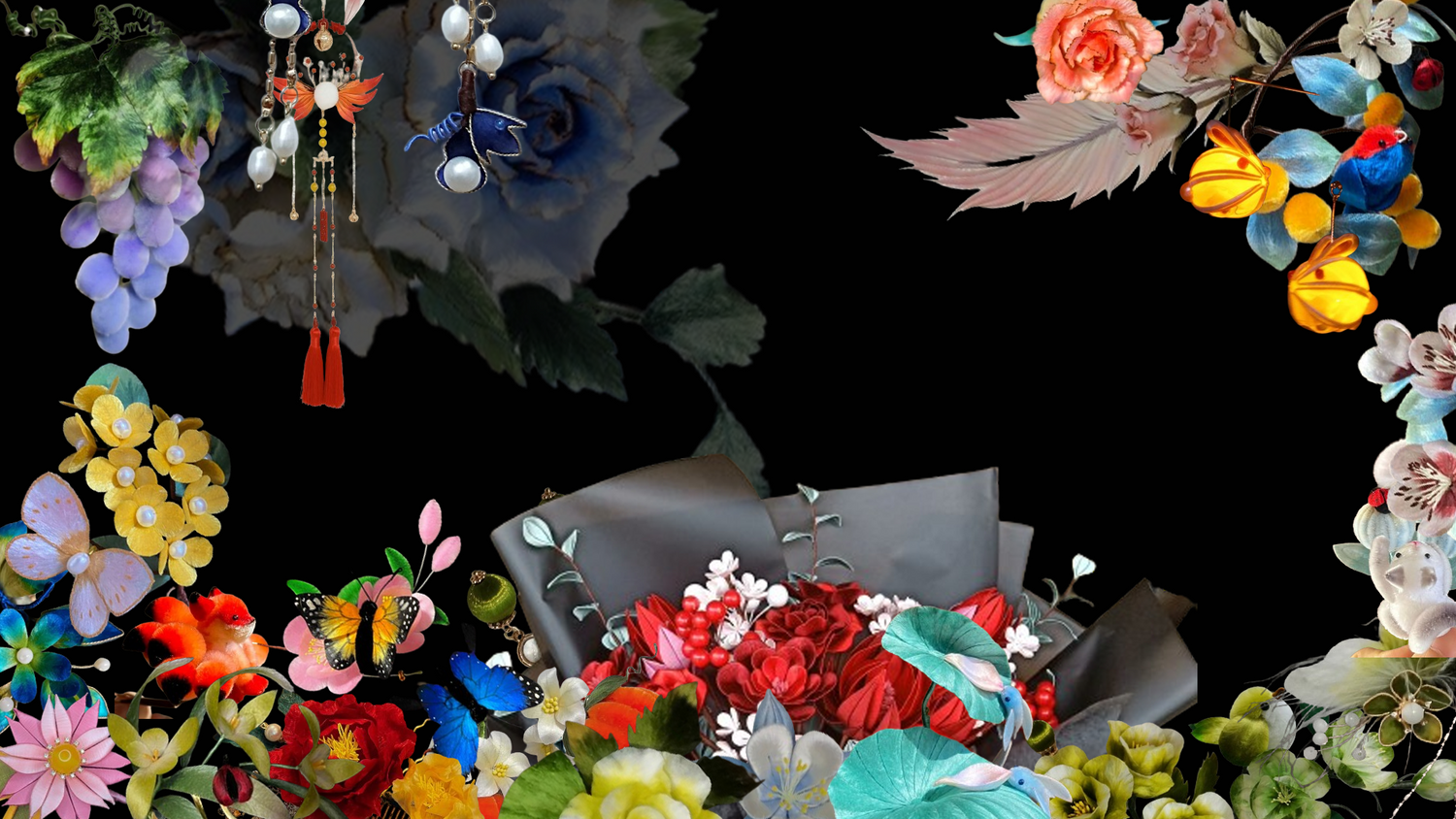
Velvet Color Mutation and Gradation - Handcraft Ronghua Tutorial
Share
Velvet Color Mutation and Gradation
Color gradation and mutation refer to the changes in the color of velvet strips. Normally, monochromatic flowers can be created with single-colored velvet strips, but many flowers in nature have gradual or sudden color changes. Therefore, mastering the techniques for making gradient and mutating velvet strips is essential in the creation of Ronghua(velvet flowers).
I. Making Gradient Velvet Strips
Gradient velvet strips refer to natural mulberry silk threads of the same color series transitioning from light to dark.
A. Unidirectional Gradient
 1 2 3
1 2 3
1. Select two types of natural mulberry silk threads in the same color series, with the lighter color in front and the darker color behind (or vice versa according to personal preference).
2. After securing them, use brass wire to clamp the natural mulberry silk threads and twist the brass wire tightly with both hands.
3. Place scissors between the two brass wires and cut the velvet row.
 4 5
4 5
4. The cutting is complete.
5. Pinch the cut velvet strip with your fingers, align one side against the edge of the table, and gently press to position the brass wire in the middle of the natural mulberry silk threads.
 6
6
6. Hold one end of the brass wire and twist it a few times in one direction with your fingers, thus rolling the velvet strip.
 7
7
7. Use a silk rolling board to make the velvet strip fluffier. Hold one end of the brass wire, place the other end between two silk rolling boards, and roll the brass wire tightly until all the silk are fluffed out.
 8
8
8. The color gradient velvet strip is ready!
Tip: This type of velvet strip is suitable for flower types that do not require folding, such as chrysanthemums and long leaves. Folding types require the velvet strip to be symmetrical in color and folded in half, twisting both ends of the brass wire together. Non-folding types have a unidirectional color gradient and do not need to be folded.
B. Bidirectional Gradient
 1 2 3
1 2 3
1. Select two types of natural mulberry silk threads in the same color series, with the lighter color in the middle and the darker color on both sides (or vice versa), creating a symmetrical color arrangement.
2. After securing, start tying the brass wire, clamping the natural mulberry silk threads, and twisting the brass wire tightly with both hands.
3. Place the scissors parallel to the brass wire and cut the velvet row.
 4 5
4 5
4. The cutting is complete.
5. Pinch the cut velvet strip with your fingers, align one side against the edge of the table, and gently press to position the brass wire in the middle of the natural mulberry silk threads.
 6 7
6 7
6. Hold one end of the brass wire and twist it a few times in one direction with your fingers, thus rolling the velvet strip.
7. Hold one end of the brass wire tightly, place the other end between two silk rolling boards. Use the other hand to hold the top board and roll it in one direction. Repeat until all the silk are fluffed out.
 8
8
8. The bidirectional gradient velvet strip is ready!
Tip: This type of velvet strip is suitable for flower types that require folding, such as peonies, plum blossoms, and apricot blossoms.
II. Making Colors Mutating Velvet Strips
Mutating velvet strips refer to velvet strips made with contrasting colors from different color series.
A. Unidirectional Mutation
 1 2 3
1 2 3
1. Select two types of natural mulberry silk threads from different color series, arranging them one in front of the other.
2. After securing, start tying the brass wire, clamping the natural mulberry silk threads, and twisting the brass wire tightly with both hands.
3. Place the scissors parallel to the brass wire and cut the velvet row.
 4 5
4 5
4. The cutting is complete.
5. Pinch the cut velvet strip with your fingers and gently align it on the edge of the table.
 6 7
6 7
6. Hold one end of the brass wire and twist it a few times in one direction with your fingers, thus rolling the velvet strip.
7. Hold one end of the brass wire tightly, place the other end between two silk rolling boards. Use the other hand to hold the top board and roll it in one direction. Repeat until all the silk is fluffed out.
 8
8
8. The unidirectional color mutating velvet strip is ready!
Tip: This type of velvet strip is suitable for flower types that do not require folding, such as chrysanthemums and long leaves.
B. Bidirectional Mutation
 1 2 3
1 2 3
1. Select two types of natural mulberry silk threads from different color series, arranging them symmetrically.
2. After securing, start tying the brass wire, clamping the natural mulberry silk threads, and twisting the brass wire tightly with both hands.
3. Place the scissors parallel to the brass wire and cut the velvet row.
 4 5
4 5
4. The cutting is complete.
5. Pinch the cut velvet strip with your fingers and gently align it on the edge of the table.
 6 7
6 7
6. Hold one end of the brass wire and twist it a few times in one direction with your fingers, thus rolling the velvet strip.
7. To fluff the velvet strip further, hold one end of the brass wire tightly, place the other end between two silk rolling boards, and roll it in one direction. Repeat until all the silk are fluffed out.
 8
8
8. The bidirectional mutating velvet strip is ready!
Tip: This type of velvet strip is suitable for flower types that require folding, such as peach blossoms and crabapple blossoms.








